

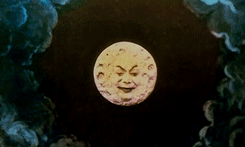
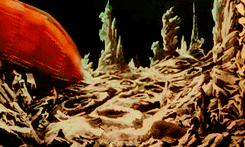
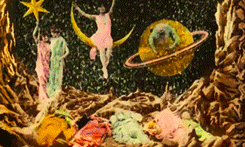

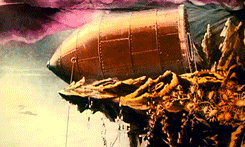
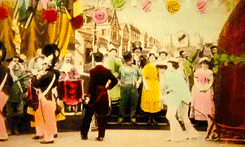
Le Voyage dans la lune (A Trip to the Moon)
December 8, 1861: Georges Méliès is born.
Dubbed a “cinemagician” for his experimentation with special effects and cinematography, this early filmmaker was, for much of his early career, a stage performer with a particular love for magic and illusion shows. He combined some of his theatrical techniques with his films, realizing that, through cinema, he could create situations and effects that could not possibly exist or be performed on stage - objects could disappear or be transformed, and rockets could fly into the moon. In 1896, the year after the Lumière brothers held a sceening for their first film, Méliès began shooting his own. By 1913 he had directed 531 films, most of which were used to showcase Méliès’ innovative special effects. His most famous film, A Trip to the Moon (1902), was one of the earliest science-fiction films. It cost 10,000 francs to produce and was extremely successful, yet it was not Méliès who profited the most off of his own movie in the United States but producers who distributed illegal copies, including Thomas Edison.

His other famous films include The Impossible Voyage (1904) and Conquest of the Pole (1912), Méliès’ last successful film before going bankrupt after a series of personal crises and financial failures. During World War I, hundreds of his studio’s films were confiscated and melted down for raw materials; still, 200 of Méliès’ films were preserved and survive to this day. After years of living out of the public eye, interest in Méliès and his work renewed in the late 1920s, and in 1931 the French government awarded him the Légion d’honneur.The Lumière brothers, who in 1895 had refused to sell Méliès a camera, proclaimed him the “creator of the cinematic spectacle”.

















